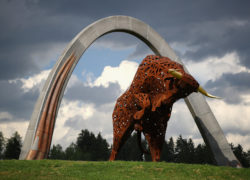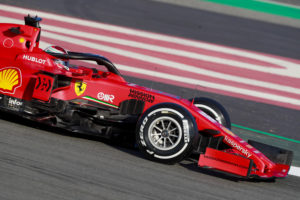
It is finally here. After months of no on-track action to speak off this weekend the 2020 Formula 1 season will finally kick-off.
The season-opener will run around the picture-perfect Red Bull Ring situated at the foothills of the Styrian Mountains. It’s been more than half a year and an awfully long dry spell for all involved but the Austrian grand prix may make the wait more than worth it.
At the outset every new season there are unknowns. Pre-season testing may have provided a rudimentary pecking order but the Red Bull Ring is a far different prospect than the traditional first race of the season around Australia’s Albert Park circuit. Instead of the unique semi-permanent street circuit F1 2020 will start on an Austrian circuit dominated by straights and heavy braking.
Though the teams all observed a compulsory shutdown period work on improving their cars has been progressing. Mercedes and Ferrari are guaranteed to bring a raft of upgrades to their cars. The number of parts may vary in comparison to the bigger teams but all teams are likely to run updated packages this weekend. Ferrari are supposedly bringing only ‘minor’ upgrades to their car. But it is believed that a new smaller and narrower nose configuration will also be introduced. Reports also suggest that Ferrari are readying an engine upgrade that is rumoured to be worth 20 to 30 BHP which could prove valuable on a circuit dominated by straights.
At Mercedes Technical chief James Allison confirmed that the team has made “significant progress” on the 2020 car and will bring a “chunk” of upgrades to Austria. It might mean that Mercedes will maintain the pre-season favourites tag. But Austria hasn’t been overly kind to Mercedes in the last few years. For one, the traditionally sky-high temperatures have severely affected the Merc on several occasions. However, as it stands the weather is forecast to be in the low twenties with 60% chances of showers on Sunday.
 The more than three month delay to racing, caused by the coronavirus pandemic, ensures that the 2020 F1 season will long being remembered as one of the most unusual. In addition to the conjecture around Ferrari’s pace and Mercedes’s ability to preserve their dominance Red Bull too enter into the equation. It’s been seven years since they last won a title and the biggest question around the Austrian-owned team is whether or not a sustained challenge can be mounted for the championship. The opening rounds of this season, which include the double-header in Austria and a third round in Hungary, are circuit tailor-made to the characteristics of the Red Bull car. It is as good a chance as they’ve ever had to assert themselves in the championship fight.
The more than three month delay to racing, caused by the coronavirus pandemic, ensures that the 2020 F1 season will long being remembered as one of the most unusual. In addition to the conjecture around Ferrari’s pace and Mercedes’s ability to preserve their dominance Red Bull too enter into the equation. It’s been seven years since they last won a title and the biggest question around the Austrian-owned team is whether or not a sustained challenge can be mounted for the championship. The opening rounds of this season, which include the double-header in Austria and a third round in Hungary, are circuit tailor-made to the characteristics of the Red Bull car. It is as good a chance as they’ve ever had to assert themselves in the championship fight.
In the midfield too there is great sense of anticipation. Can McLaren maintain their position as best-of-the-rest? They have momentum on their side but team’s financial difficulties add an extra layer of pressure to maximise every point-scoring opportunity. Was the pace shown by Racing Point in pre-season testing legitimate and can they keep their eye on the ball despite the team’s imminent re-branding as Aston Martin? Dubbed the ‘pink Mercedes’ due to its overwhelming similarity to the 2019 Merc the Racing Point team made a big statement in testing. It’s now though that they’ll need to prove that their pace is legitimate. Will Renault, undoubtedly under pressure from France, move forward? For a works team Renault has been languishing further down the field than it should be and must begin to show progress up the grid if it is justify its participation in the sport. Has Williams produced a car capable of scoring points? There were signs early on that the 2020 Williams was at least better than its predecessor. However, the 2019 car didn’t exactly set a high bar. The team seemed cautiously optimistic that it is moving in the right direction.
The 2019 Austrian grand prix, which culminated in a last gasp win for Max Verstappen, was easily one of the best races of the season. If the 2020 Austrian grand prix has even the slightest resemblance to it then we’re in for a cracker.


